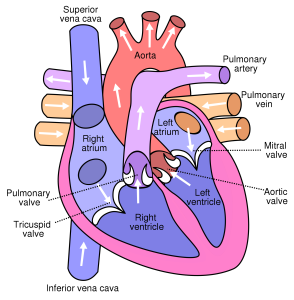WILD- Lesson 3- Cardiopulmonary Arrest/CPR

Cardiopulmonary Arrest
Cardiopulmonary arrest (CPA) occurs when normal blood circulation ceases due to the heart’s inability to contract (heart failure). Like many other body systems, the respiratory and cardiovascular systems work in a coordinated fashion. Cardiac arrest can occur in dogs and cats of any age, sex, or breed. Cardiac arrest can occur due to many circumstances. From end-stage disease, to arrhythmias, to different types of cancer, cardiopulmonary arrest is an unfortunate complication of many injuries and illnesses.
When a cardiopulmonary arrest occurs in your practice, having a well- trained team ready to provide high-quality CPR may be the difference between life and death for your patient. The importance of team training for CPA response is a big part of the Recover Clinical Guidelines, produced by the Journal of Veterinary Emergency and Critical Care, which recommends
refresher training at least every six months. The success of cardiopulmonary resuscitation (CPR) efforts depends on many factors, including the underlying cause of the arrest, the timeliness and effectiveness of the intervention, and the preparedness of the team administering CPR.
Overall prognosis of recovery from cardiopulmonary arrest (CPA) with CPR efforts is as high as 35%–44%; however, only <10% of animals survive to discharge. A few years ago, over 100 board certified veterinary specialists from around the world collaborated to develop the Reassessment Campaign on Veterinary Resuscitation (RECOVER) evidence-based veterinary CPR guidelines. Prior to the publication of the new advance in CPA management, the absence of standardized guidelines or training for cardiopulmonary resuscitation (CPR) in veterinary medicine has been cited as a major factor in the historically poor outcomes for dogs and cats in cardiac arrest. However now that we have a set of industry standards for managing cardiopulmonary arrest, we have found that when CPR is done correctly, 50% of dogs and cats that arrest in the peri- anesthetic period survive to discharge. To have a full understanding of Basic as well as Advanced Life Support in dogs and cats, it is first important to understand the function and subsequent dysfunction in CPA, of the cardiac as well as respiratory systems.
Cardiopulmonary arrest (CPA) occurs when normal blood circulation ceases due to the heart’s inability to contract (heart failure). Like many other body systems, the respiratory and cardiovascular systems work in a coordinated fashion. Cardiac arrest can occur in dogs and cats of any age, sex, or breed. Cardiac arrest can occur due to many circumstances. From end-stage disease, to arrhythmias, to different types of cancer, cardiopulmonary arrest is an unfortunate complication of many injuries and illnesses.
The Heart is a muscular organ about the size of a fist that pumps blood through the network of arteries and veins called the cardiovascular system. The heart pumps blood with a rhythm determined by a group of pace-making cells in the sinoatrial node. These cells generate a current that causes contraction of the heart, traveling through the conduction system of the heart. The heart receives blood low in oxygen from the systemic circulation. From here it is pumped through the lungs where it receives oxygen and gives off carbon dioxide. Oxygenated blood then returns to the heart and is pumped out to the body.
The heart has four chambers:
- The right atrium receives blood from the veins and pumps it to the right
- The right ventricle receives blood from the right atrium and pumps it to the lungs, where it is loaded with oxygen.
- The left atrium receives oxygenated blood from the lungs and pumps it to the left
- The left ventricle (the strongest chamber) pumps oxygen-rich blood to the rest of the The left ventricle’s vigorous contractions create our blood pressure.
Cardiopulmonary Resuscitation
Cardiopulmonary resuscitation, commonly known as CPR, is an emergency procedure that combines chest compression with respiratory ventilation in an effort to manually preserve intact brain function until the animal reaches emergency veterinary care or the animal revives, referred to as ROSC or return to spontaneous circulation. CPR needs to begin within 10 minutes after becoming unresponsive.
After 10 minutes, irreversible damage to tissues and organs begins reducing the likelihood of a successful resuscitation attempt. Injury to the patient from performing CPR is rare, however risks such as rib fractures (1.6%), Muscle damage (14%) and Chest pain (11.7%) can occur.
The following chart shows the three levels of resuscitation.
|
Red |
Do not resuscitate |
|
Yellow |
Closed chest CPR only |
|
Green |
Open chest CPR is approved by owner** |
**Open chest resuscitation is usually only offered at large emergency centers or local referral centers. Some indications for open chest CPR include: Large /giant breed barrel chested dogs, pleural specie disease, pericardial disease, patient in which closed check CPR has been unsuccessful and current abdominal surgery. Open chest resuscitation requires a large amount of aftercare including surgery to close the animal’s chest. Be sure to speak with your veterinarian before choosing this option.
